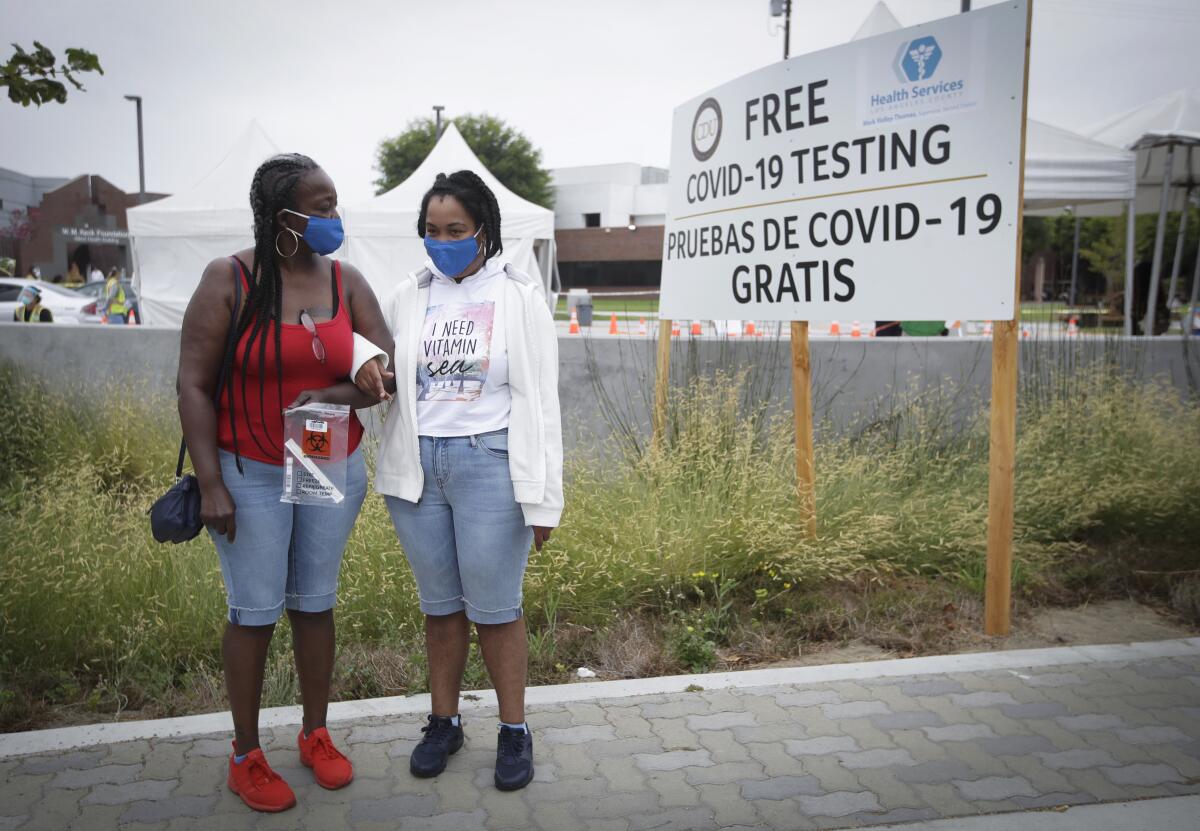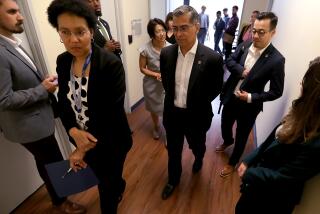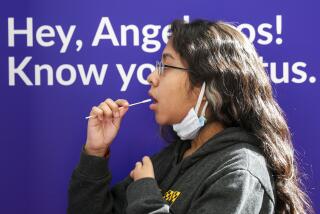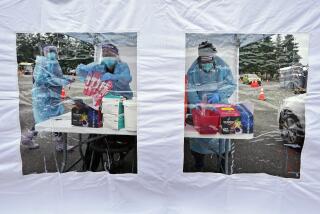No, the U.S. isn’t ‘winning’ at coronavirus testing. But we could be

- Share via
President Trump likes to say no one is testing for COVID-19 like the U.S. If by that he means no country has been as disorganized and scattershot when it comes to testing for the coronavirus, that would be easy to believe.
The president doesn’t mean that, of course; he’s saying we do more tests than any other country. But this country’s testing record is nothing to be proud of. Depending on the state, there are between two and 13 times more people infected with COVID-19 than have been identified.
The U.S. started off behind the curve, bungling the first rollout of COVID-19 tests. And five months into the pandemic, with cases, deaths and hospitalizations back on the upswing in several states, the U.S. is still far behind the level of testing needed to control the spread of the infection and safely reopen businesses and schools.
Capacity for diagnostic tests varies wildly from state to state. Organized contact tracing and isolation of infected people isn’t happening in a meaningful way. It’s a mess.
Winning is still an option — if Congress and the president commit now to spending billions of dollars to accelerate testing across the nation, to generate test results in a matter of hours rather than days, and to support state and local efforts to trace and isolate infected people. If we don’t do this soon, more states are likely to be caught alongside California in a cycle of closures, reopenings and re-closures that could continue through the months, maybe years that it will take to have a reliable and widely available COVID-19 vaccine.
At the moment, about 4.5 million COVID-19 tests are conducted in the U.S. every week. That sounds like a lot, but it’s not nearly enough to locate and contain the virus to the point that it’s safe to send children back to school and to reopen businesses and workplaces for the long term, according to a recent report by the Rockefeller Foundation. The report, which was produced with the help by a distinguished bipartisan committee that includes former U.S. Food and Drug Administration commissioners, a Nobel-prize winning economist and infectious disease experts, concluded that the goal should be a combined total of at least 30 million diagnostic and screening tests a week as soon as possible. Other groups of academics and experts have advocated for a similar goal.
The report put the price tag for a concerted testing program at $75 billion. It is an enormous investment of public money, to be sure, but the alternative could easily be more costly not just in terms of lives lost or debilitated, but also in terms of damage to the economy. Even without government-enforced shutdowns, many Americans will avoid resuming normal activities unless they are confident that they won’t get infected.
In addition to Congress allocating enough money, the report recommends the president use the Defense Production Act to ensure an adequate supply of testing reagents — the substances that react to the presence of the virus. As Gov. Gavin Newsom has put it, a testing kit without a reagent is like a printer without ink.
Testing is only the first step. People who test positive must be interviewed to find out where they have been and whom they may have been in contact with, and to encourage them to stay isolated from others until they are no longer infectious. This is not a new idea; it’s standard public health department protocol to stop the spread of dangerous infectious diseases, such as with the recent outbreaks of measles in California and other states. Without this crucial step, we don’t know where or how the infection is spreading. Yet contact tracing has mostly been left to states and local public health departments, which were underfunded even before the pandemic.
It was unsettling to learn this week that despite a concerted effort to train thousands of state employees to act as contract tracers, California still isn’t able to track all the people who test positive for COVID-19. Dr. Mark Ghaly, the secretary of California’s Department of Health and Human Services, acknowledged last week that about two-thirds of the 3,600 state workers trained to support counties in contract tracing have not yet started work. If we can’t cut red tape during a public health crisis, then what’s the point of having emergency declarations?
California has to do better. And so does the federal government. Fighting infections is not a mystery. It just takes money, organization and commitment.
More to Read
A cure for the common opinion
Get thought-provoking perspectives with our weekly newsletter.
You may occasionally receive promotional content from the Los Angeles Times.









